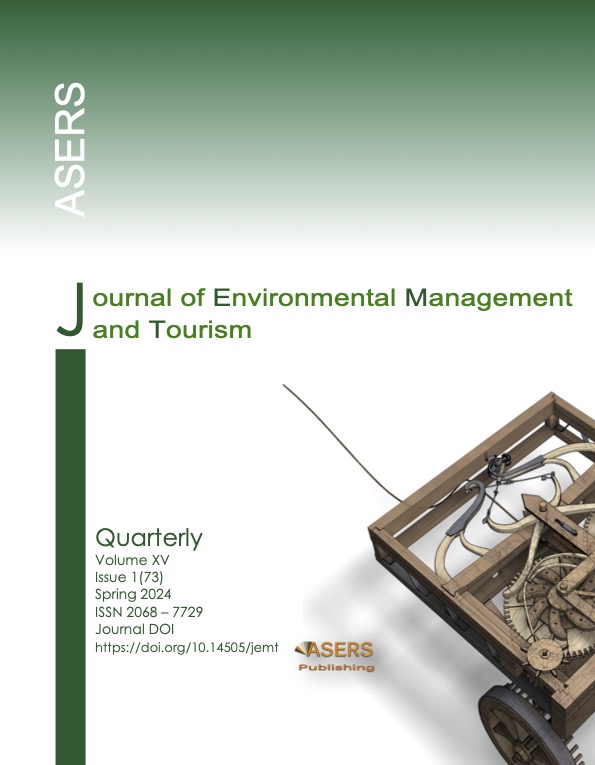Promoting Albania's Tourist Attractions: Tourist Guides and Marketing Strategies for the Successful Management of Tour Groups
Abstract
Currently, Albania is a growing destination for foreign tourists because the country offers diverse natural, cultural, historical, and spiritual sites. Thanks to the contribution of national and foreign archaeologists, who have shed light on the rich Albanian archaeology, these sites have today received the designation of tourist destinations. However, the current situation does not reflect the full potential of Albania in this field because the country has many more discovered areas that need to be brought to light and promoted. Just as there are, a significant number of historical and cultural objects need to be treated and revived according to the standards of the time. Likewise, there is a need for the tourist guides to find new ways of marketing while leading and guiding the groups of tourists. The purpose of this study is to highlight the problems of promoting tourist attractions and handling cultural objects as well as to suggest new alternatives that are more efficient and compatible with the demands of the time. The methodology used in this research is a combination of qualitative and quantitative methodology. Specifically, for data collection, the main instruments used are a semi-structured interview and a focus group. Also, we have tried to extract data from tourist subjects, the institute of monuments and representatives of the tourism community, through which we have managed to draw conclusions and suggestions. The analysis of the data obtained in this study highlights the urgent need for a new and moderate conception and attitude for the strategy of promoting Albania’s tourist attractions. The Albanian monuments of cultural heritage, as a precious asset, should take a special importance in the life of the country, through the functional promotion that becomes part of the life of its own citizens.
References
[2] Burrai, E., Buda, D-M., and Stevenson, E. 2023. Tourism and refugee-crisis intersections: co-creating tour guide experiences in Leeds, England. Journal of Sustainable Tourism, 31(12): 2680-2697. DOI:10.1080/09669582.2022.2072851
[3] Cernea, M. 2008. "The Developmental Potential of Cultural Heritage Environments," in Cultural Heritage in the Arab World, edited by Fekri Hassan, Aloisia de Trafford and Mohsen Youssef.
[4] Eagan, K. 2024. Top 5 Technology Trends Shaping Tourism in 2024. Tourism Review. Available at: https://www.tourism-review.com/travel-technology-trends-in-2024-news14109
[5] Escobar, A. 1995. Encountering Development: The Making and Unmaking of the Third World. Princeton, New Jersey: Princeton University Press.
[6] Hall, C. M. 1994. Tourism and Politics: Policy, Power and Place. Chichester: John Wiley and Sons.
[7] Hall, C. M. 2014. Tourism and Social Marketing. Abingdon: Routledge.
[8] Hall, M. and McArthur, S. 1996. The Human Dimension of Heritage Management: Different Values, Different Interests, Different Issues.
[9] Loulanski, T. 2006a. Cultural Heritage in Socio-Economic Development: Local and Global Perspectives Environments, IDEAS, 34(2): 54-55.
[10] Loulanski, T. 2006b. Revising the Concept for Cultural Heritage: The Argument for a Functional Approach, International Journal of Cultural Property.
[11] Maho, N. 2023. Cultural tourism, visitors increased by 45%, Kruja Museum and Gjirokastra Castle lead. Monitor. Available at: https://alfapress.al/english/ekonomi/turizmi-kulturor-vizitoret-u-rriten-me-45-kryeson-muzeu-i-krujes-dhe-kal-i80288
[12] Rappensperger, T. (2023). How to Use Social Media to Promote Tour Packages. Regiondo. Available at: https://pro.regiondo.com/blog/social-media-tours/
[13] Richards, G. 1996. (ATLAS) Cultural Tourism in Europe, published by CAB international. Wallingford, UK.
[14] Rypkema, D. 1999. Culture, Historic Preservation and Economic Development in the 21st Century. Paper for the Leadership Conference on Conservancy and Development, Yunnan Province, China.
[15] Trautmann, C. 1994. “Strasbourg mise sur la Culture”, Cahiers espaces Nr. 37, Paris, Espaces 1994 (cit. Karine D., Sustainable World Heritage Site Management: Between interpretation, conservation and visitor management – case study of Bamberg, master thesis, 2005, pg.11).
[16] Willmott, M., and Graham, S. 2001. The world of Today and Tomorrow the European picture. In Tourism and Hospitality in the 21st Century. Eds. A. Lockwood and World Tourism Organization. 1999. Tourism 2020 Vision. Madrid: WTO.
[17] Yahaya, A. 2006. The Scope and Definitions of Heritage: From Tangible to Intangible, International Journal of Heritage Studies (Routledge), 12(3): 295.
[18] Ministry of Tourism and Environment (2019). National Strategy for the Sustainable Development of Tourism 2019-2023, June 2019.
[19] Ministry of Tourism and Environment (2023). Available at: https://turizmi.gov.al
[20] UNESCO. 2008. Convention for the Safeguarding of the Intangible Cultural Heritage. ICOMOS, 32nd Session of the General Conference, Paris, 29 September–17 October 2003. (cit. Prof. Dr. Jukka Jokilehto, On Definitions of Cultural Heritage, Heritage Theory).
[21] World Bank (2001). Cultural Heritage and Development: A Framework for Action in the Middle East and North Africa, Washington D. C.: World Bank. p .44.
[22] WTO, UNWTO. Annual Report 2010, p.61. www.en.unesco.org www.ligjet.com www.unesco.org, www.unesco.org; www.unesdoc.unesco.org
Copyright© 2025 The Author(s). Published by ASERS Publishing 2025. This is an open access article distributed under the terms of CC-BY 4.0 license.
